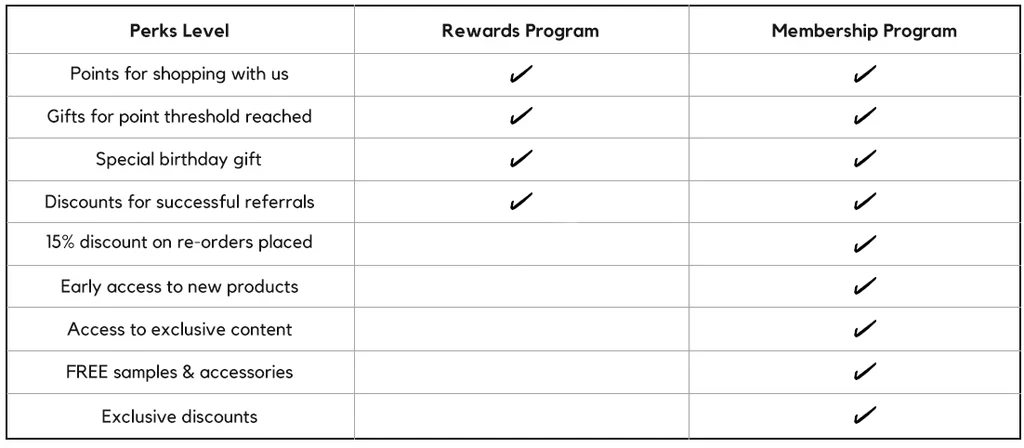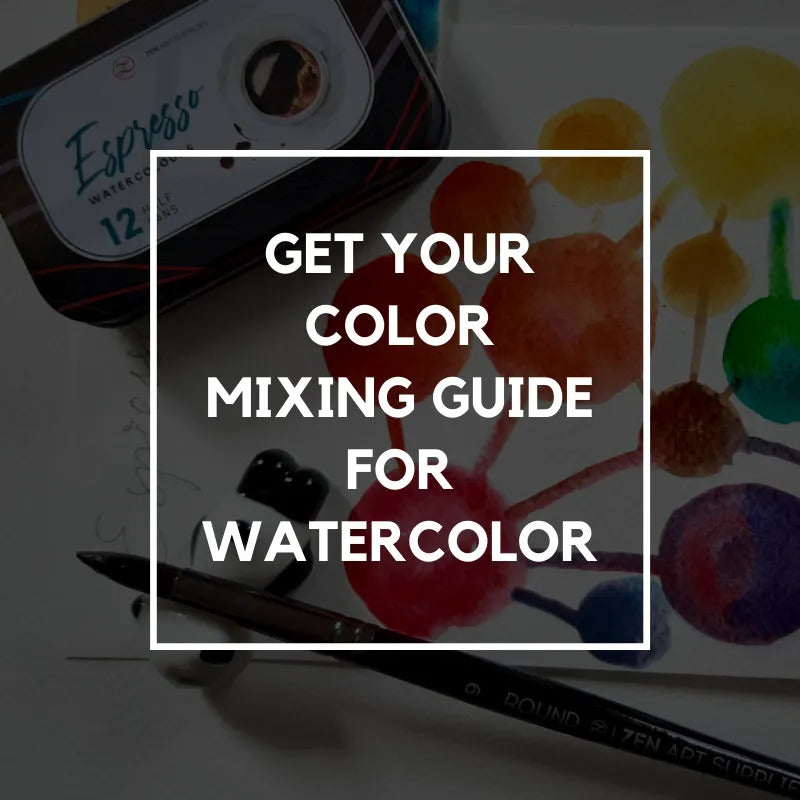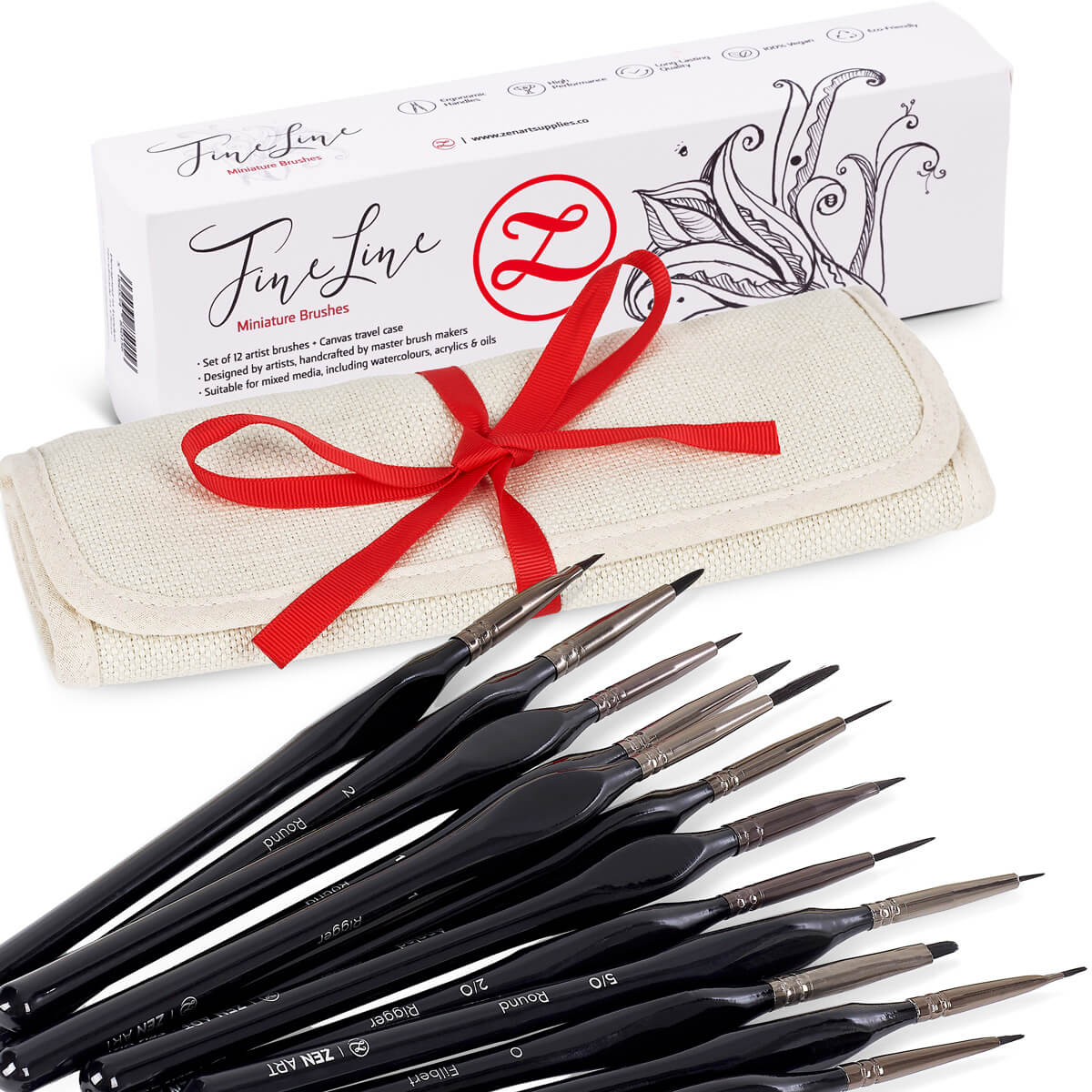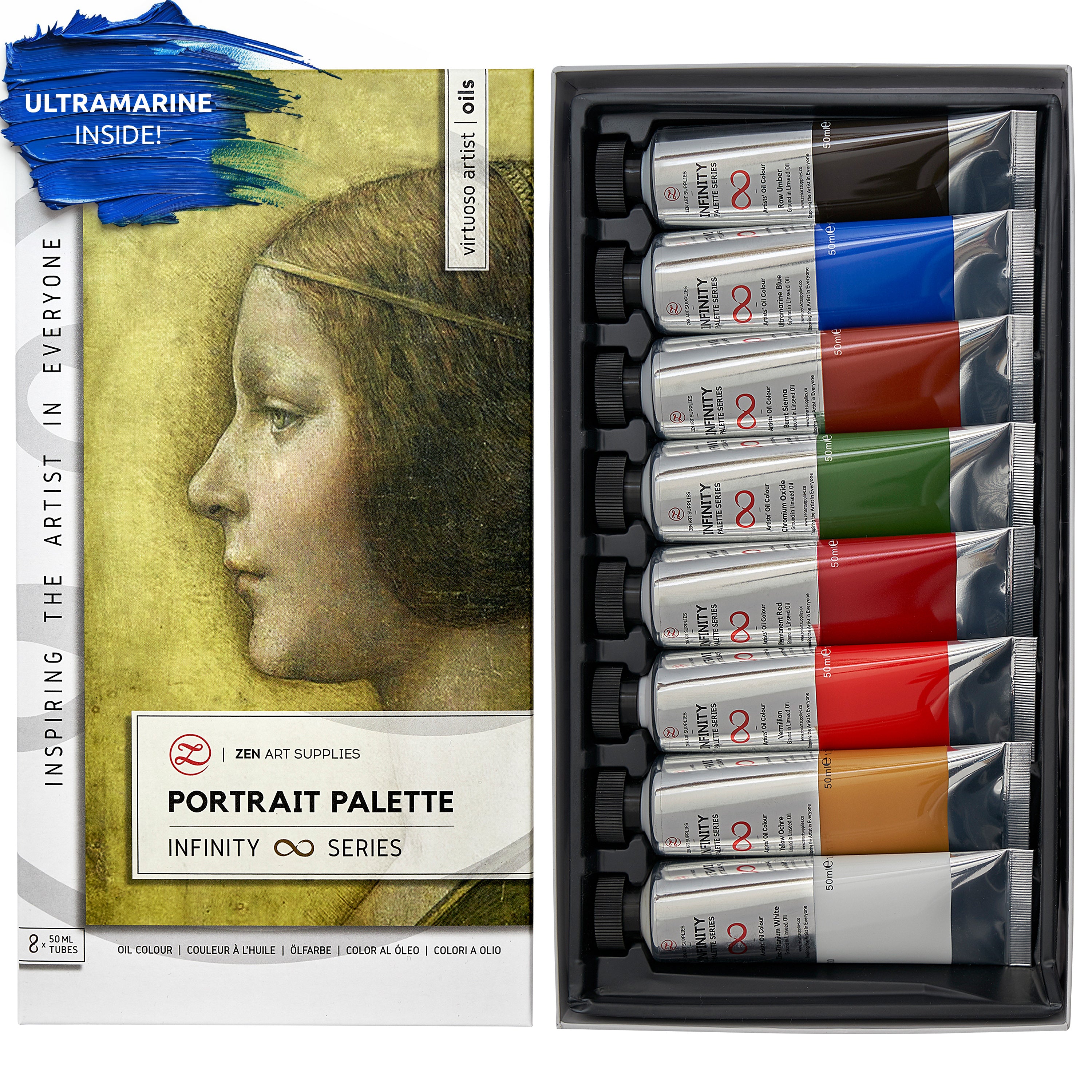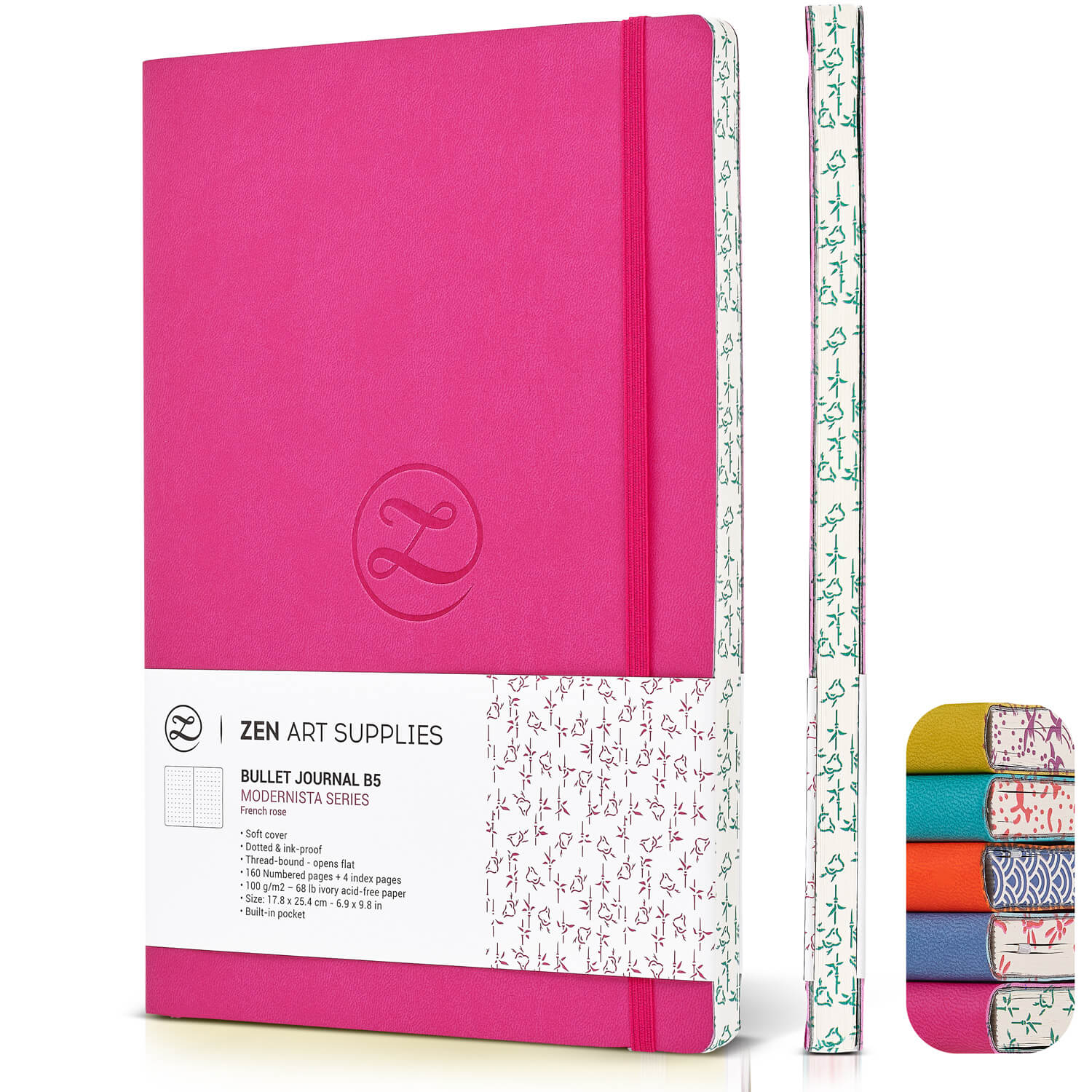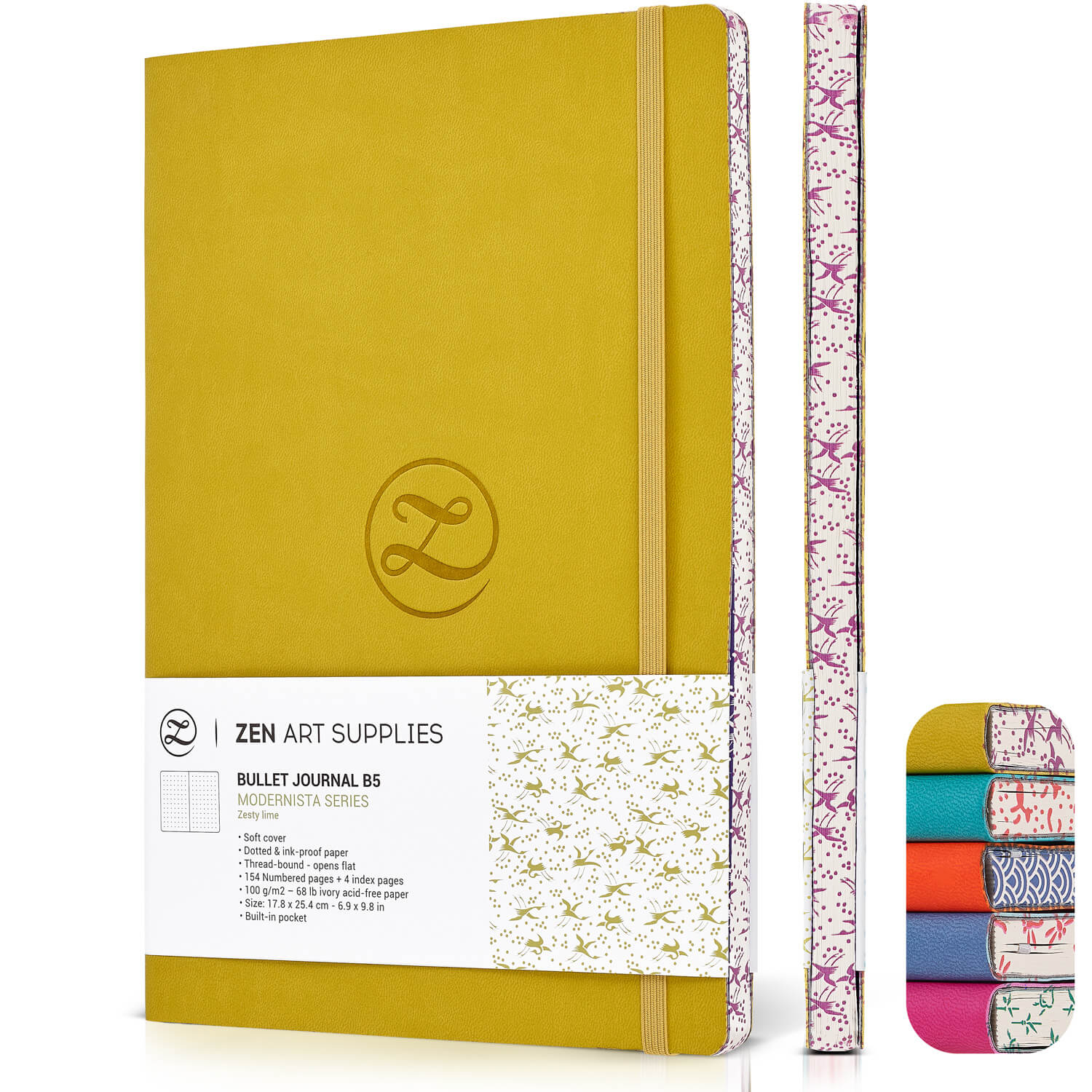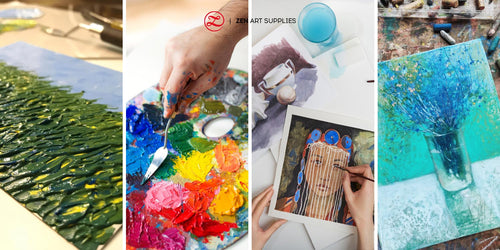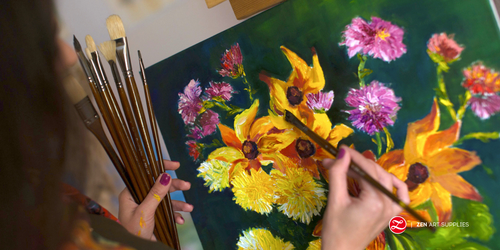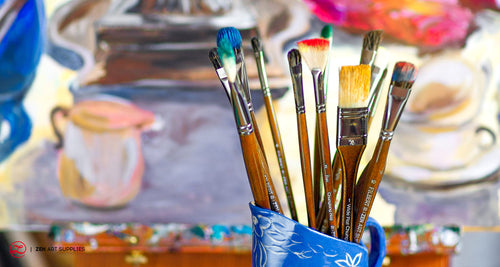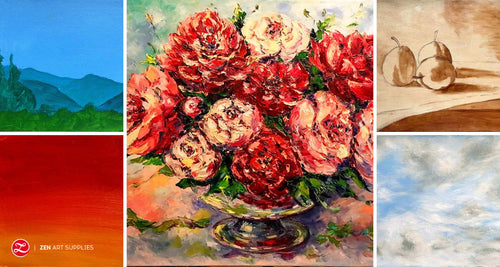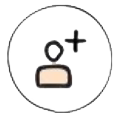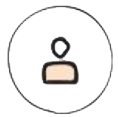When beginner artists set out on their journey with watercolors, sometimes they reach for cheaper, student-grade brushes. Worse, they reach for the wrong kind of brush.
What they don’t know is that your watercolor painting experience is only as good as your supplies. Not all brushes are made for watercolor. And not all brushes marketed for watercolor will work for your style.
A bad brush will shed and lose shape after only a few uses. The worse ones start to look and feel like an old toothbrush after one stroke. That’s why it pays to invest in good quality watercolor supplies.
Building a brush collection isn’t hard. Nor should it be excessively pricey. You just need to learn what counts as good quality. Here’s a quick guide to choosing the best quality brush for watercolor painting.
How do you know if a watercolor brush is good? How does a good brush work?
Good watercolor brushes will last you decades if you care for them well. And they should still hold their shape and point even after repeated use.
The best way to evaluate watercolor brushes is, well, to test them with watercolors. Most stores won’t allow you to do that, though. The next option is to rely on how they feel: sturdy, balanced, soft, and snappy.
If you’re shopping online, research and reviews are key. There’s more to choosing the right watercolor brush than knowing what it’s made of. You should also know how it works.
Look at the bristles

The main focus should be its head or its bristles. Are the hairs soft? Do they snap back into place when bent and released? What kind of hairs are used?
Here’s what characteristics to look out for:
Absorbency and capacity
Watercolor brush bristles are like sponges. How much water and pigment can they hold? Consider the hair type and how big the brush’s belly is.
Point
The fine tip or shape of a brush helps spread pigment on paper. Even while wet, a watercolor brush should still be able to hold its point once you set a stroke upon the paper.
Flow
This is how well the watercolors flow from the brush’s tip. Test out a brush by putting down a long stroke of color. Is the pigment steadily and evenly dispersed or does it dump all out?
Snap or Spring
Do the bristles “snap” back into place quickly after being bent at an angle? When wet, how stiff is the brush on the page—does it “spring” back into shape? These qualities factor into how well the brush can be controlled on the page.
Now check out the brush handle

Brushes for thicker paints like oil and acrylic will have longer handles, making them easier to use when standing before an easel. Watercolor brushes will have shorter handles since the medium is more often used up-close and on a flat, horizontal surface.
Brush handles are made from plastic, various types of wood, or metal. Wooden brush handles can be varnished, unvarnished, or raw. Don’t go for brushes with raw or untreated wood if you’re working with watercolors. These are more absorbent and quite literally go bad. The best watercolor brushes have handles dipped in multiple coats of varnish to protect the wood from wear and tear.
Is the ferrule secure and sturdy?
A ferrule is that metal part connecting the brush hairs to the handle. It shouldn’t feel loose or wobbly. Look at the crimping or the part where the metal is fastened to the handle. You should see a dip in the metal. Is the ferrule securely compressed into the handle?
Some paintbrush manufacturers simply attach the head with glue and leave the crimping as a mere decorative step. I’ve noticed these brushes fall apart faster.
Natural hair vs. synthetic hair—does it matter?

Most artists tend to base their brush-buying decisions and reviews on their art style and art experience. Many swear by kolinsky sable hair for its softness, absorbency, and snap. Does hair type matter when choosing a watercolor brush? Absolutely.
Your choice here boils down to natural hairs, synthetic hairs, or a combination of both.
The best brushes have pointed bristles and finer tips. For this reason, natural hairs are the best choice. The good ones like sable or squirrel are absorbent and snappy! With recent innovations in brushmaking, however, there are synthetic brushes that even mimic the qualities of natural bristles.
Natural brushes (from high to low quality)
These are the most common types of brush hairs you’ll come across.
Kolinsky Sable Hair
The most premium and most expensive type of watercolor brush. They’re pricy because kolinsky sable hair is so high in demand. The bristles are taken from the tails of weasels that are native to Siberia and northeastern China. These super soft and super absorbent brushes have thick bellies, hold fine points, and are extremely resilient.
Red Sable Hair
A cheaper alternative to kolinsky sable brushes. It’s just as good in quality and performance—highly absorbent, soft, and springy.
Squirrel Hair
What it lacks in its snap, it makes up for in its water-holding capacity. Its fine points make it ideal for detail work, while its absorbency is perfect for washes.
Ox Hair
Taken from the ears of cattle, ox brushes are a bit stiffer but strong and snappy. These brushes don’t come to a good enough fine point so they’re best for flats or painting textures.
Goat Hair
Best if you’re getting an oriental style brush—the ones used in Chinese painting or calligraphy. Not so springy but good for soft blending.
Camel (or Pony) Hair
Mostly used in scholastic watercolor brushes for kids. Camel hair brushes are cheaper to manufacture. I wouldn’t recommend this since it’s neither strong nor snappy, making for an inferior brush.
Synthetic brushes
These brushes have synthetic fibres made of nylon, polyester, or a combination of both. They point well but are sometimes not as fine as squirrel or sable hair. Synthetic brushes can be absorbent but may risk dumping pigment too quickly. Still, they’re pretty snappy, strong, and much more long-lasting.
Today, more synthetic brushes are designed to perform as natural hairs do. So they’re still a solid option.
What watercolor brush shapes do you need?

You don’t need all kinds of brushes, just a few good-quality ones to start. We recommend a good mix of basic brushes: round brushes, flat brushes, and a wash brush. Note that paintbrush sizes vary per manufacturer. For reference, you can check out our guide to ZenART brush sizes!
Round Brush
The most common and most versatile shape. With round brushes, you can achieve both broad strokes and finer details. Round brushes still come in different variations: thick or thin bellies, pointed or domed tips, and long or shorter bristles.
Flat Brush
Another versatile must-have. Great for painting thick and thin straight lines as well as bold strokes. You can get a wider flat brush for larger washes or backgrounds. Other variations of flat brushes include the angled, dagger, filbert, and bright brush.
Rigger brush
A round brush with long bristles and a sharp tip. Perfect for long, continuous lines and even calligraphy.
Fine point or detail brush
Usually a pointed round brush with short bristles and a short handle. These are essential for those who like to paint up-close and in heavy detail.
Mop brush
You’ll know it for its mop-like shape. It’s a large round with either a domed or soft pointed tip. Used for covering large areas with watercolor paint. A large cat’s tongue also makes for an excellent mop or wash brush.
Get more in-depth with all the brush shapes (and what they do) in our guide to the different types of paintbrushes.
How do you choose your watercolor brushes?

Tailor your chosen brushes and art supplies to your painting style.
My recommendation? Start small and get to know your watercolor style before growing your collection of brushes. Don’t buy too many brushes or overly expensive brushes until you’ve been painting for a while. This way, you don’t waste your time or money on brushes that you won’t even paint with.
In the end, it’s about personal preference. That’s why it’s good to know your brush types and shapes before narrowing down your options to what sizes you need.
Below is my thought process when buying paintbrushes at the store:
How much is your budget?
Needless to say, paint within your means. But if you’ve got the funds to spare and are confident in your skills, by all means, grab the kolinsky sable brushes and paint like the superstar you are!
Still, an expensive brush isn’t always the better brush. However, really cheap brushes are just terrible to work with—they also don’t last that long. So unless you want to throw money away, don’t bother with the duds.
Natural hair brushes can cost more money. So if you’re a watercolor newbie, you can start with a handful of synthetic brushes. They’re affordable, durable, and pretty decent starter brushes. Once you figure out your style and preference, invest in better brushes from your wishlist.
How does the brush feel in your hand?
Here’s where you assess a brush’s quality and longevity. Feel the different hair types with your hands to determine your preferred bristle type. Go back to what we said earlier about spring, snap, point, and capacity. Does the brush tip snap back or hold a good point? Do the bristles feel soft and springy or rough and brittle?
But brush hairs aren't the only part you need to pay attention to. How securely is the ferrule attached to the handle? Does the brush handle feel weighted or properly balanced? A brush works just like an extension of your arm. It should feel good, comfortable, and natural to hold.
What’s your painting style?
Pick the brush shapes according to the style or techniques you want to achieve. For example, I’m a casual watercolorist and my style is abstract, meditative, soft, and expressive. I haven’t reached for an angled brush or fan brush in ages.
If you obsess over the fine details, grab a small round brush with a sharp point. Fancy painting broad strokes? Go for flat brushes. Grab some big round brushes if you need to paint large washes of color. Mop brushes work, too.
How big will your artwork be?
As a general rule, the larger your surface, the larger your brushes must be. Figure out the sizes you need for your work. You don’t need to get brushes in every size. Just the ones you need for the paper you prefer. You won’t need large wash brushes if you paint on postcard-sized watercolor pads.
Will you be painting outdoors or in-studio?
If you’re painting safely from home or your art studio, you should be good to go with a standard set of watercolor brushes.
But do you love to travel journal or paint en plein air like the Impressionists? Regular paintbrushes with their long inflexible handles may prove to be too bulky or heavy.
You’ll be better equipped with small brushes you can easily pack up and stash away in a bag. There’s the ZenART Art Nomad brush set—four travel-friendly brushes just for watercolor. You can also grab a bunch of water brushes. These are watercolor brushes that store water in the handle.
What are the best watercolor brushes for starters?

You could buy synthetic brushes and natural hair brushes apiece or you could get them in pre-curated sets. It’s a much easier choice and, more often than not, a more affordable one.
That said, a substandard brush set still isn’t worth it in the long run. Do your research on brush makers and art brands. Invest in high-quality brushes! For instance, the watercolor brushes we have here on ZenART Supplies are handmade and carefully crafted by artisans—designed for artists and by artists.
Black Tulip: Essential brushes for beginners
Concerned with the ethics of buying a natural hair brush? Go for synthetic brushes! With today’s technology, synthetic hairs can easily replicate the characteristics of natural hairs. Our Black Tulip set does just that, mimicking the snap and control you get with sable hair. It’s a good brush set that covers the basics without breaking the bank.
Turner Collection: Comprehensive brush set to master watercolor painting
Ready to paint watercolor like a pro? The ZenART Turner Collection, inspired by English Romantic painter and watercolorist JMW Turner, features an extensive range of brushes for all kinds of watercolor painting. They’re made with a combination of squirrel hair and synthetic brush hairs. Designed for watercolor paints, these brushes hold their shape even after painting for ages!
Fine Line Set: Watercolor brushes for the detail-oriented artist
This one’s for detail-oriented artists. Good to use with watercolor paint and even acrylic, the Fine Line Set (coming back soon!) has all the different brushes you need for painting small details. Also, the handles are shaped and weighted for comfort and ease while painting.
What's your go-to watercolor brush?
Do you prefer natural hair or synthetic bristles when you paint with watercolors? Which shape do you reach for more: a round brush or a flat brush? Let us know in the comments below!
Need help along your watercolor journey? Next up on your reading list is: how to choose watercolor paints and then how to use watercolor paper.
Check out our stories in the Toolkit section of the ZenART blog, too. We’ve got guides on brush types, brush sizes, and more.
Happy painting!
- MEET THE AUTHOR-

Belle O. Mapa is a writer and artist based in Manila, Philippines. She believes that everyone is born with an inner creative spirit—we just need to nurture and discover it on the blank page. Currently, she lives out her passion: writing stories, hosting journaling workshops, and advocating for mental health awareness.







